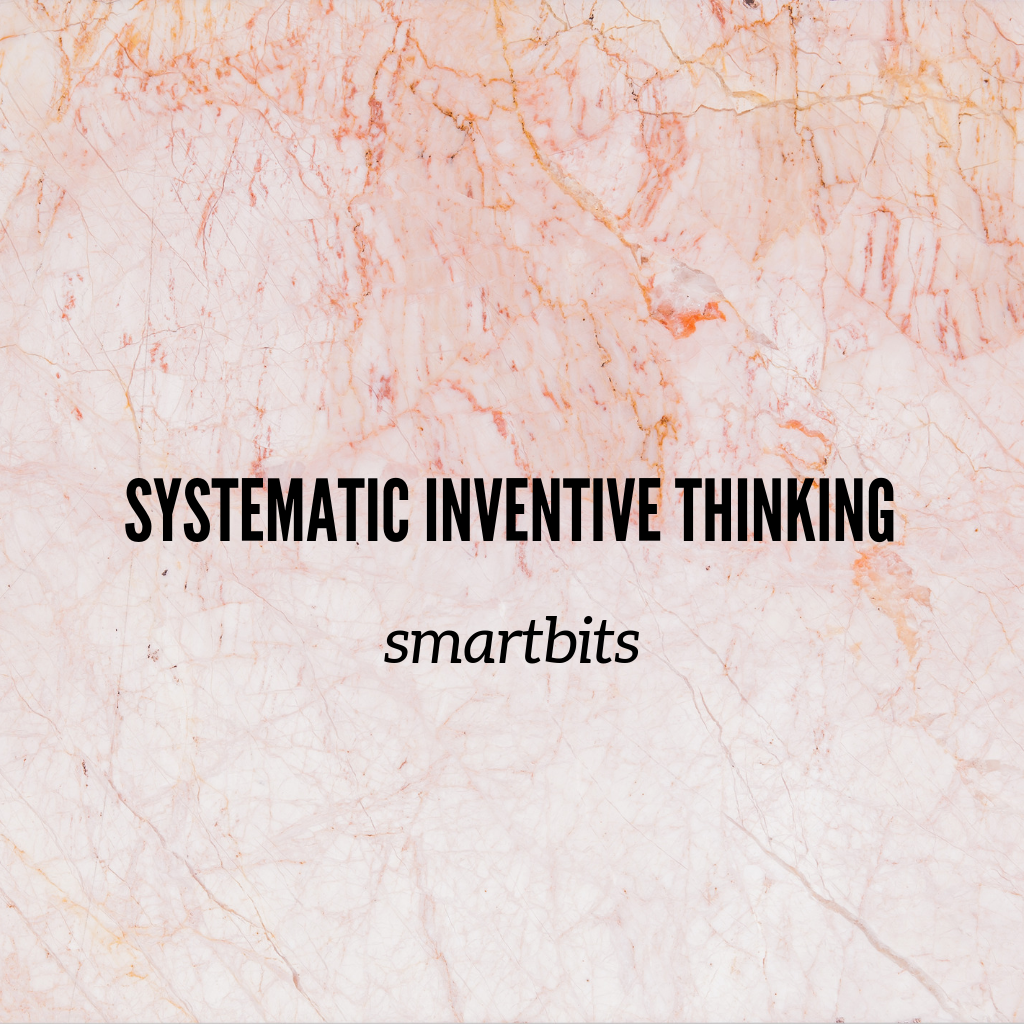Summary
Systematic Inventive Thinking is a method to direct our creative energies to solving problems that have strict boundaries to coming up with solutions in an innovative manner.
The video of this “nano learning” smartbits video is available here.
Ashok: How can Systematic Inventive Thinking enable QA to re-craft his or her thinking skill ?
Tathaghat: The way I look at Systematic Inventive Thinking or SIT method, is that it is a very good way for us to direct our creative energies to a specific way of problem solving – It doesn’t stop us from applying it anywhere.
For example, one of the methods in SIT is all about “multiplying” something. For example, Febreze NOTICEables found that if they put the Febreze perfume, people after a point of time were getting desensitised. Once you have the fragrance in the room, you stop feeling it after a some point of time. So they said why don’t we put one more perfume scent there, but now this is a different perfume scent, it’s not exactly the same thing, because that’s not of a value. They multiply it, but then they actually have a different one. What happens is when you start it, the first one fills up the room and just before you are kind of getting desensitised, the second one takes over. So you feel fresh again there and that’s been a very successful product for Febreze. It’s known as a Febreze NOTICEables.
So these are ideas that help when we get stuck. In the SITmethod, we have this whole notion of what is a closed world. While it is very easy for us to go outside and get some resources and become innovative, in SIT world, the most creative ways of solving the problem or most innovative ways in which we provide a solution is within the boundaries of what we have. For example, if you are driving in a jungle and you get a flat tire, how do you solve the problem? While there might be a lot of creative ways of solving it, the reality is that you have what you have in the car. So that is a closed world right? The car is a closed world there.
I think it is more of a philosophical tool actually in which you can direct your thinking and say “Okay, how do I solve that problem?”, instead of saying “There is only one particular way of solving the problem”.
I will definitely give one example of how they used it in designing and testing a software to illustrate the point. It happened 15-20 years back when the e-commerce was not very common. When people kind of started doing it, they found that when you give a credit card number, that was kind of a security risk because the number is then stored and people are unaware. In fact, one of the case study in SIT method is about how they created a local copy of it, again using the multiplier pattern where you have created a pattern and now that the pattern is available, you can safely use it anywhere. It created some kind of a unique encrypted copy which is not a security threat anymore. There are a lot of examples available on SIT website on how it has been used in many ways. I cannot immediately think of how it might be applicable in a QAactivity per se, but I am looking at the entire product. How do we really create innovative solutions where some of that can be done ? I am sure once people understand with the SIT method, it will be very obvious how they might be able to find some creative ways to test or qualify a solution.
Ashok: Some of the patterns like add, multiply and divide, are these like a certain standard pattern in that method?
Tathaghat: That’s right. So, these are four methods and then there is also attribute-dependency. Attribute dependency is a very interesting. When we order the pizza, it says 30 minutes or free. What happens is if the pizza is delivered in 30 minutes? You pay. The moment the 30-minute timeline is over, it becomes free. So time has an attribute dependency on the prize. Now, it might help us to actually create some test cases for example where we know that a system has a behavior, which is not a linear behavior, but there is an attribute dependency on that and then I am able to actually design my test cases around that.
Ashok: So how is this in TRIZ for example ?
Tathaghat: I think TRIZ in some sense a similar kind of a problem solving method. SIT came out of a professor’s work in Israel, and they basically came up with these ideas 20-25 years back. They’ve applied it in many industries and places. I find it very interesting. It’s a very simple but in very profound way. We only have five tools and a few principles in that, but I think the applications are huge.
click to video
Signup to receive SmartQA digest that has something interesting weekly to becoming smarter in QA and delivering great products.
